Digital Twin For Mining
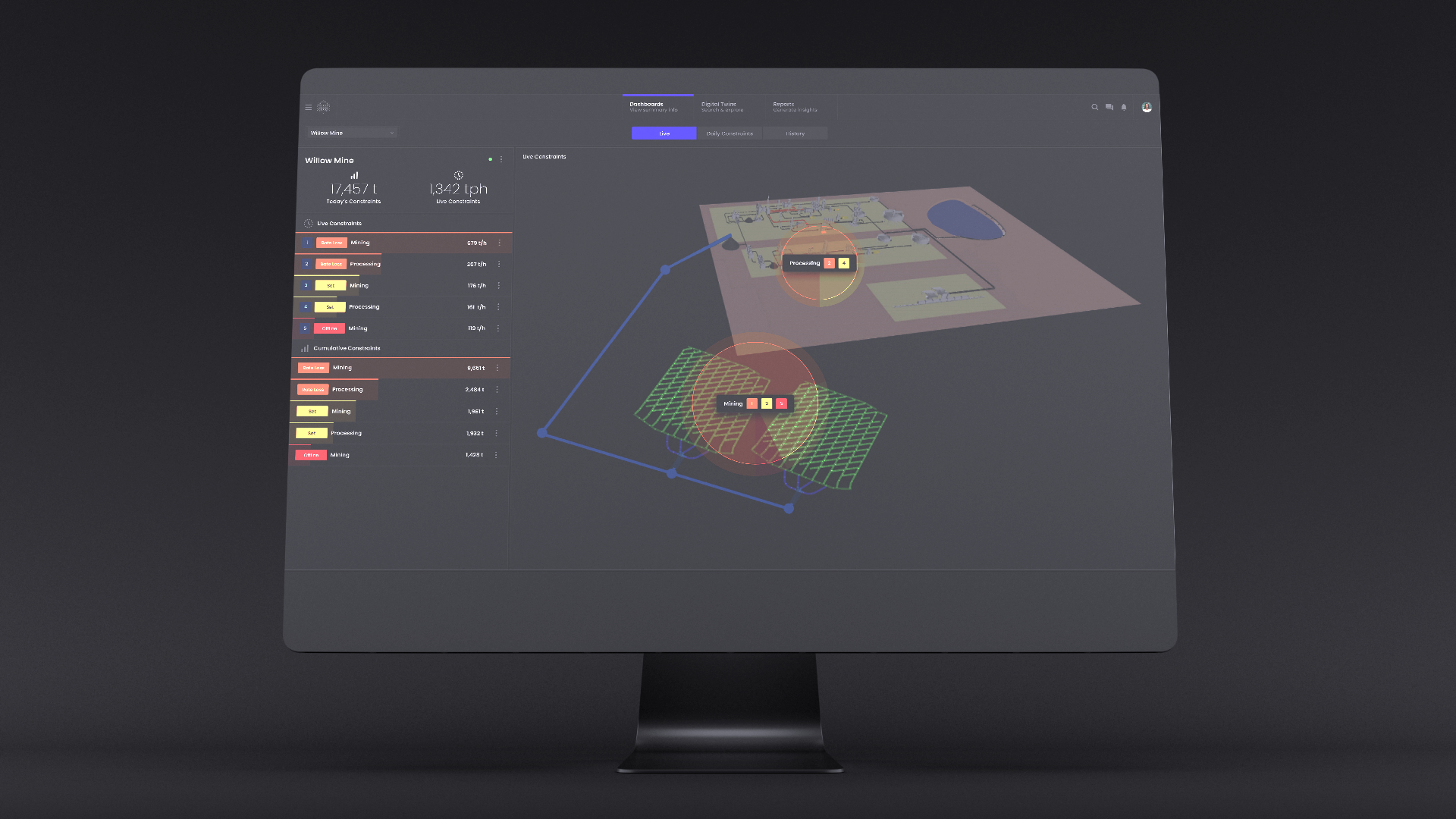
Client: Willow Digital
Role: UX Designer
The Twin
The Digital Twin for Mining is a constraints-based digital twin to prioritise, measure and mitigate production impacts for Mining. It visualises in near real-time a replica of your fixed plant operations, and provides data-backed insights to better manage work and target sustaining capital improvements.
The Design Challenge
I was brought in very early into the development of the Twin - This meant at the outset we had determined a value broadly speaking to the mining industry for a product like this, however had not as yet determined specific users, use-cases or change management/other considerations as to how a product like this should be tailored and delivered to realise maximum value - this constituted the bulk of discovery work.
Additionally on the UI side, the challenge was to deliver data and insights in a meaningful way to a flexible range of user types; ultimately we’re trying to tell a story using data to aid decision making.

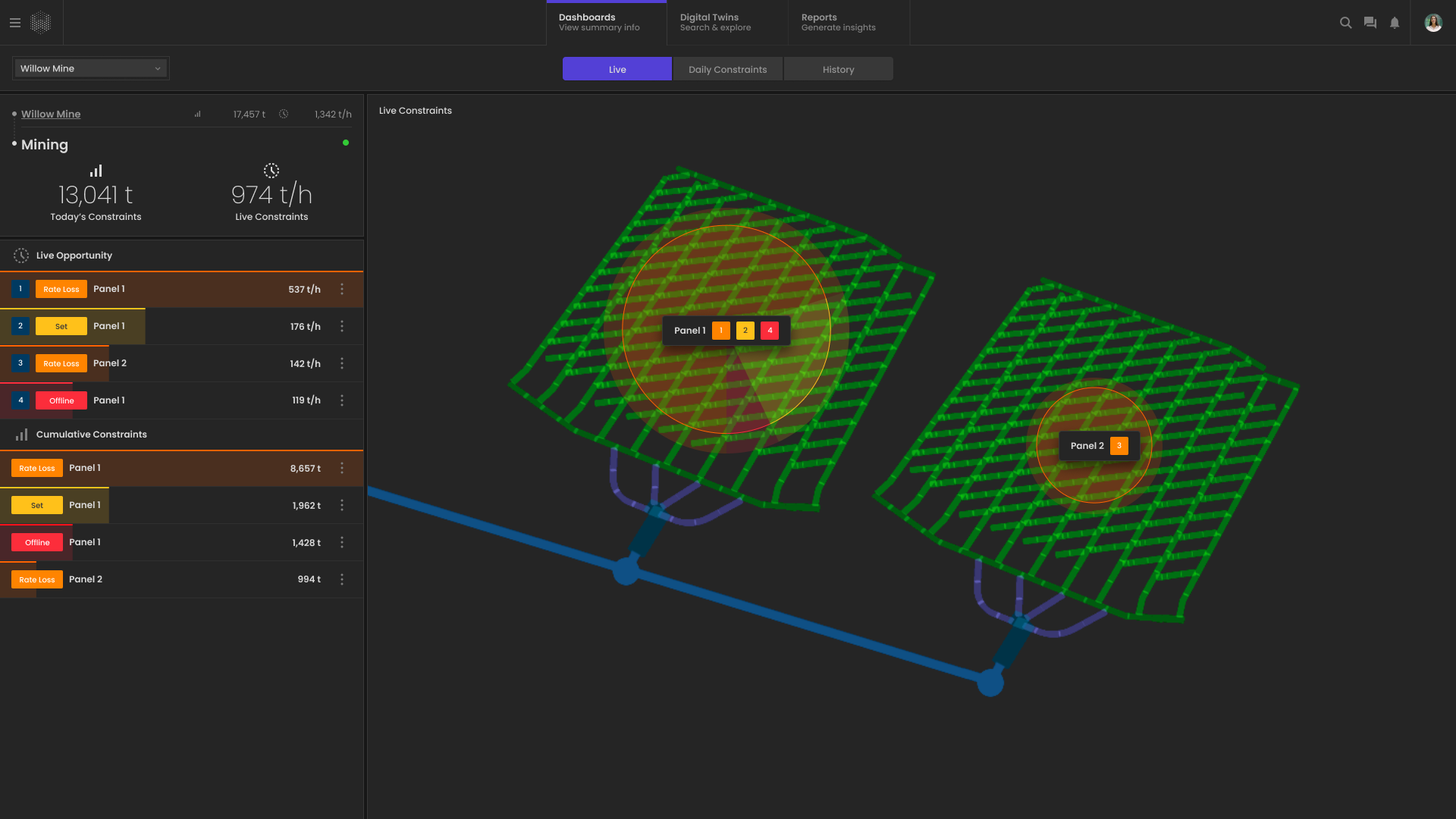

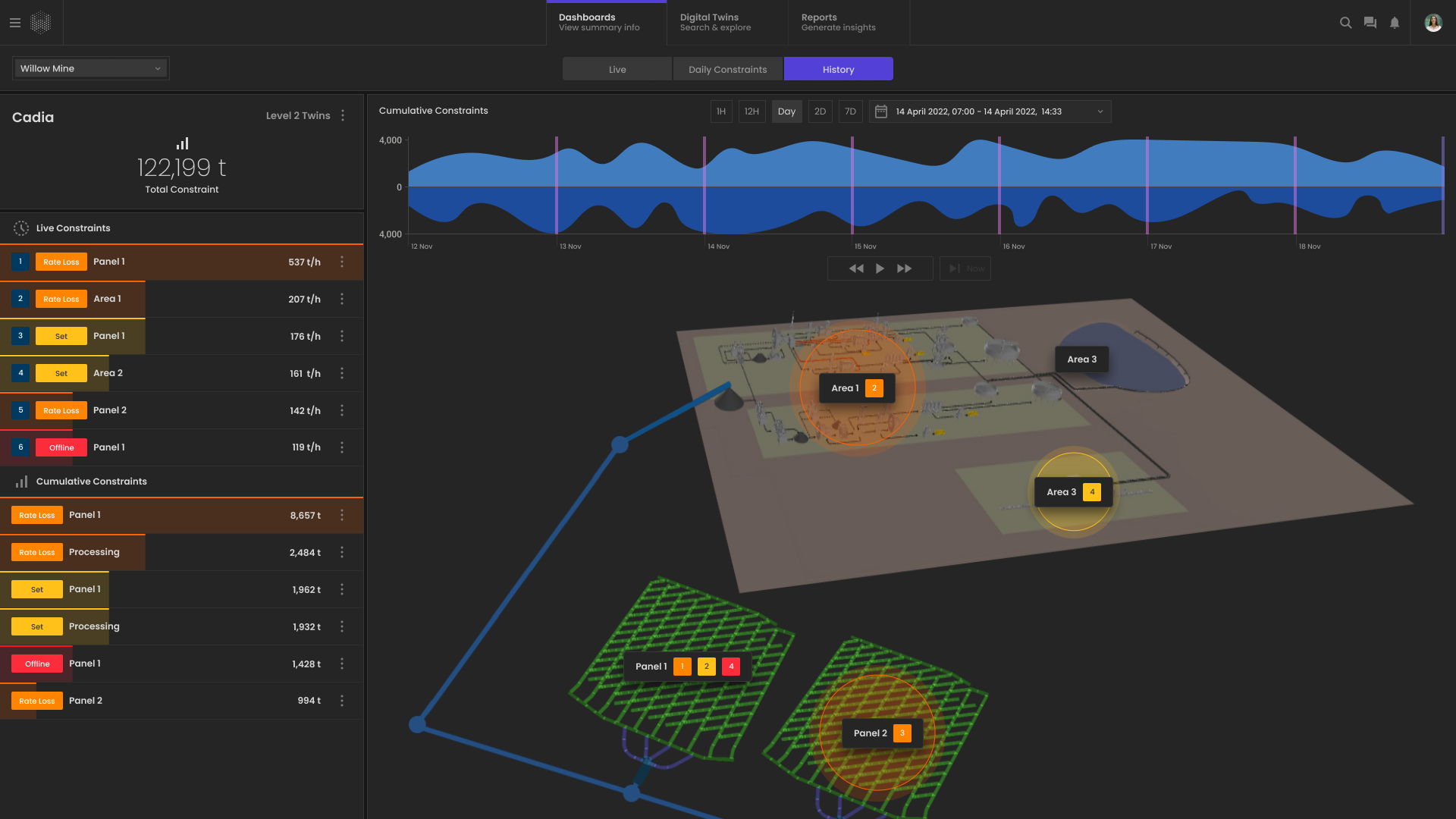
The Approach: Design
The aim of the game was to tell a story, but in a way that appealed to and was understandable to a wide audience user base, so that Miners, Executives, Engineers and Specialist could all look at the same screen and understand what they needed to know to engage in decision making conversations with the others.
This meant we needed to deliver SIMPLE INSIGHTS whilst providing enough DETAIL so that this story could be conveyed to multiple user types.
Below is an example of how we deliver an insight about if now is a good time for Maintenance to Occur and below that, the diagram shows how that insight relates to material flow within a system and some detail as to the rate of material flow. This is meaningful to many mining user types on multiple levels and provides the detail required to support human conversations.

Back to Top
Data sharing across Government and public services.
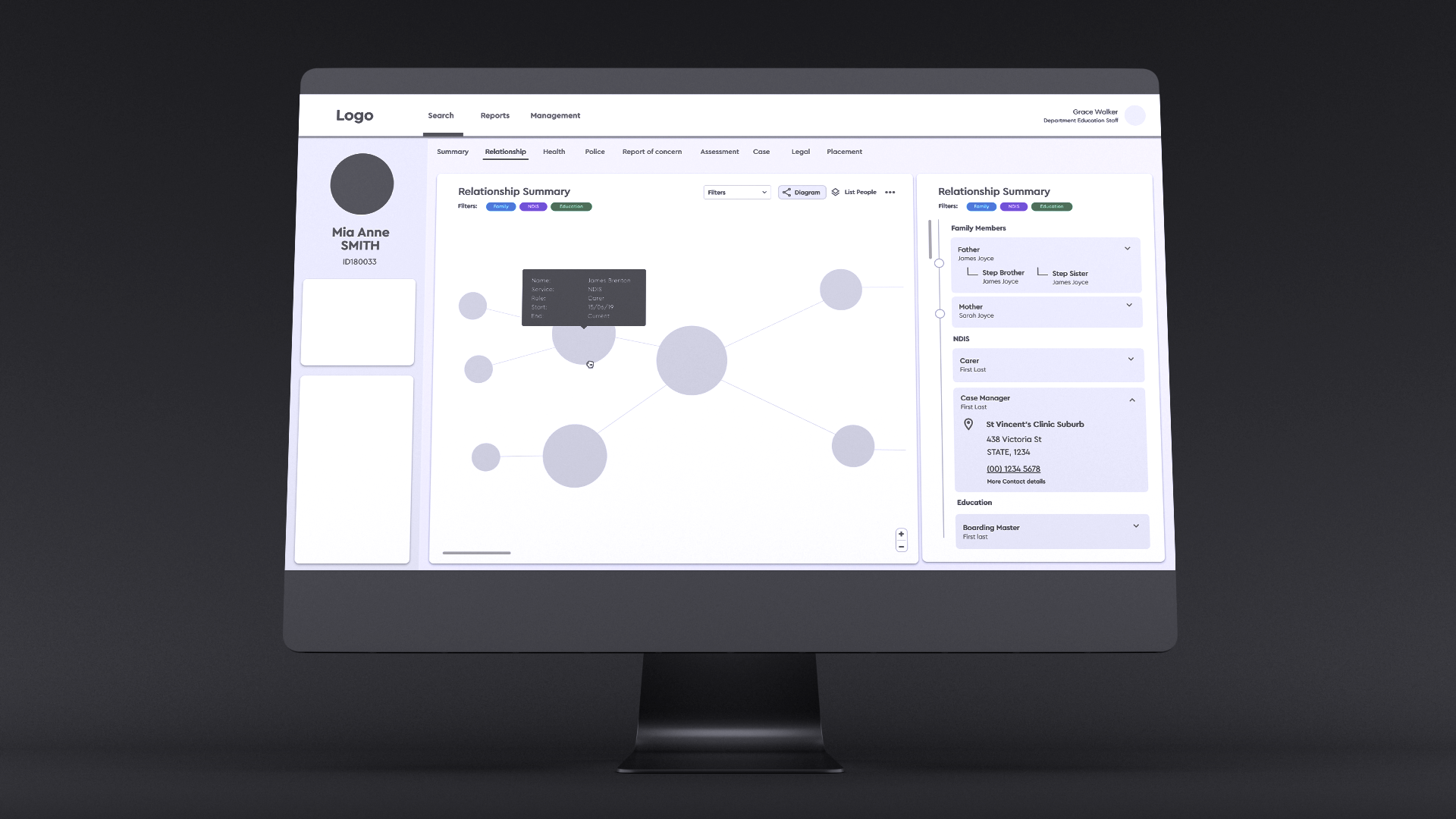
Client: Australian State Government.
Role: UX Designer
Note: Identifying language and designs have been intentionally removed.
The Platform
The platform provides crital enablement services for Education, Health and Social Services to share information to promote children’s wellbeing or safety.
It acts as the register for all children within this Australian state, providing a single view of a child’s engagement across the whole of the state Government services.
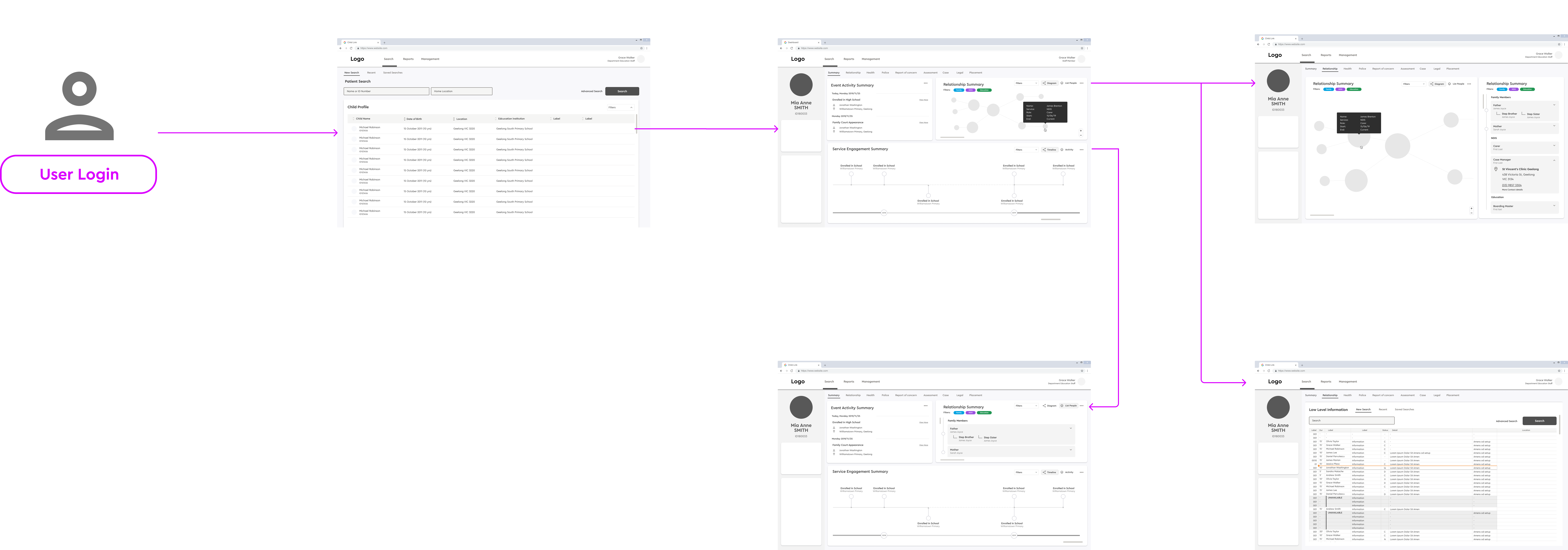
The Design Challenge
This platform was created primarily from new legislation which required that such a platform be developed by the state government without delay.
The scope of potential use-cases and user-types was a large unknown at the outset. This combined with broad legislative requirements for the platform meant that FLEXIBILITY of the IA to handle a growing list of TYPES of data was essential; Providing At-a-glance data for certain user-types and low-level data for others also meant providing multiple visual pathways to comprehending the same information.
The Approach
Beginning with understanding what the client did know as well as what they didn’t allowed me to formulate educated assumptions as to the CATEGORIES and sources of high-value data across Education, Health and Social Services.
Starting here allowed me to create an Information Architecture that presents high-level at-a-glace information, and allows users to “drill-down” into lower and lower levels of detail.
Data Visualisation
If you’ve ever asked or been asked to explain a complicated family structure, you will surely relate to the challenge of telling or receiving this story simply, quickly and in a manner that conveys true understanding.
It was important that high-level data be deliverable and comprehensible using visual storytelling methods and low level more detailed information be sortable and usable.
A relationship-diagram, such as I use often in workshops and discovery sessions, tested the best with users in terms of understandability and so we utilised that within the platform.
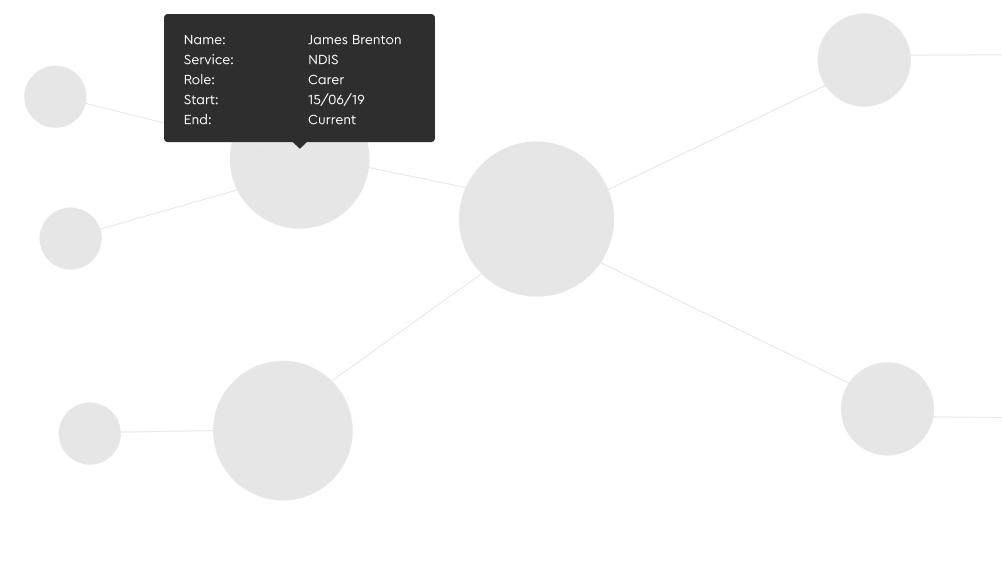
Design Slideshow
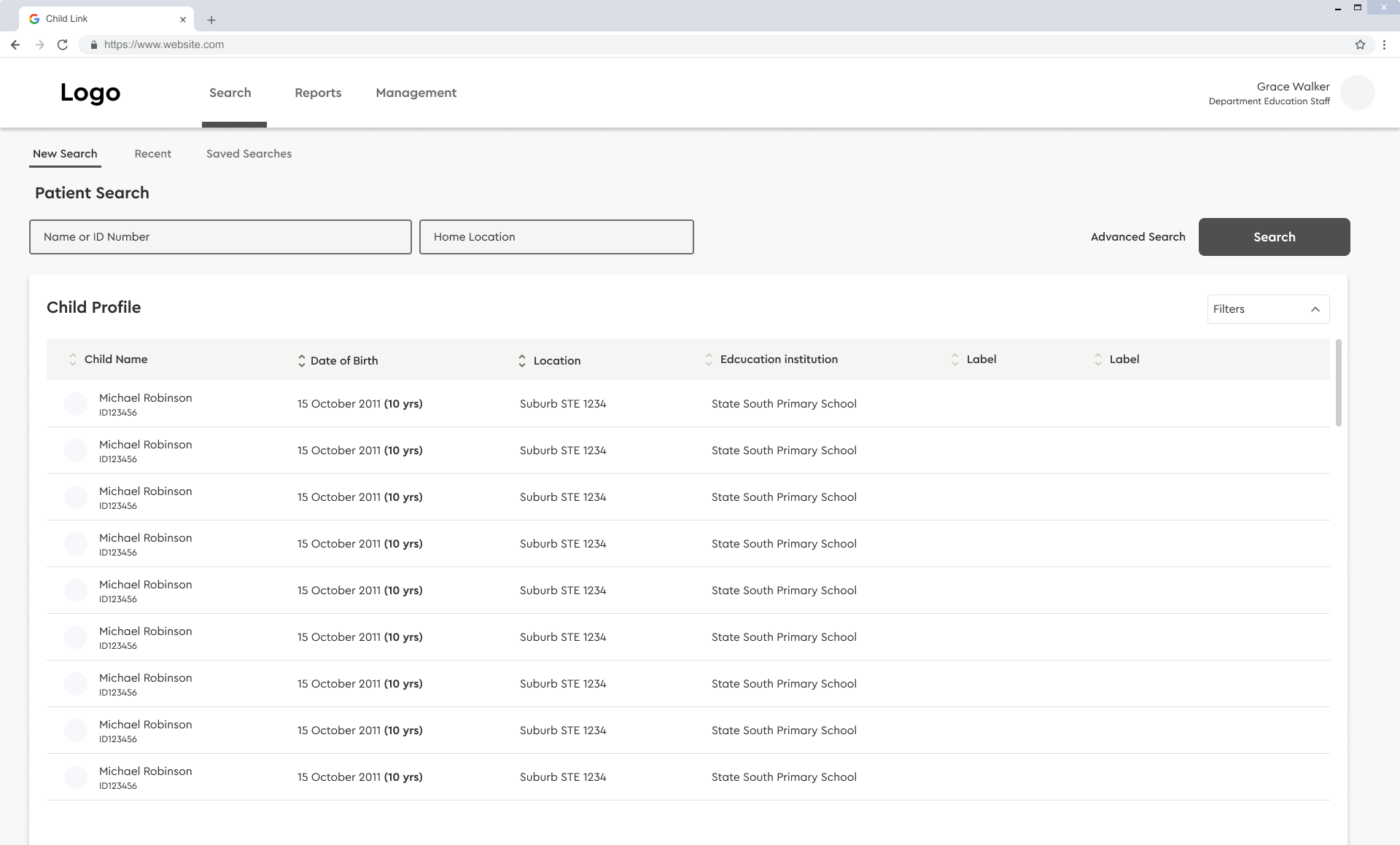
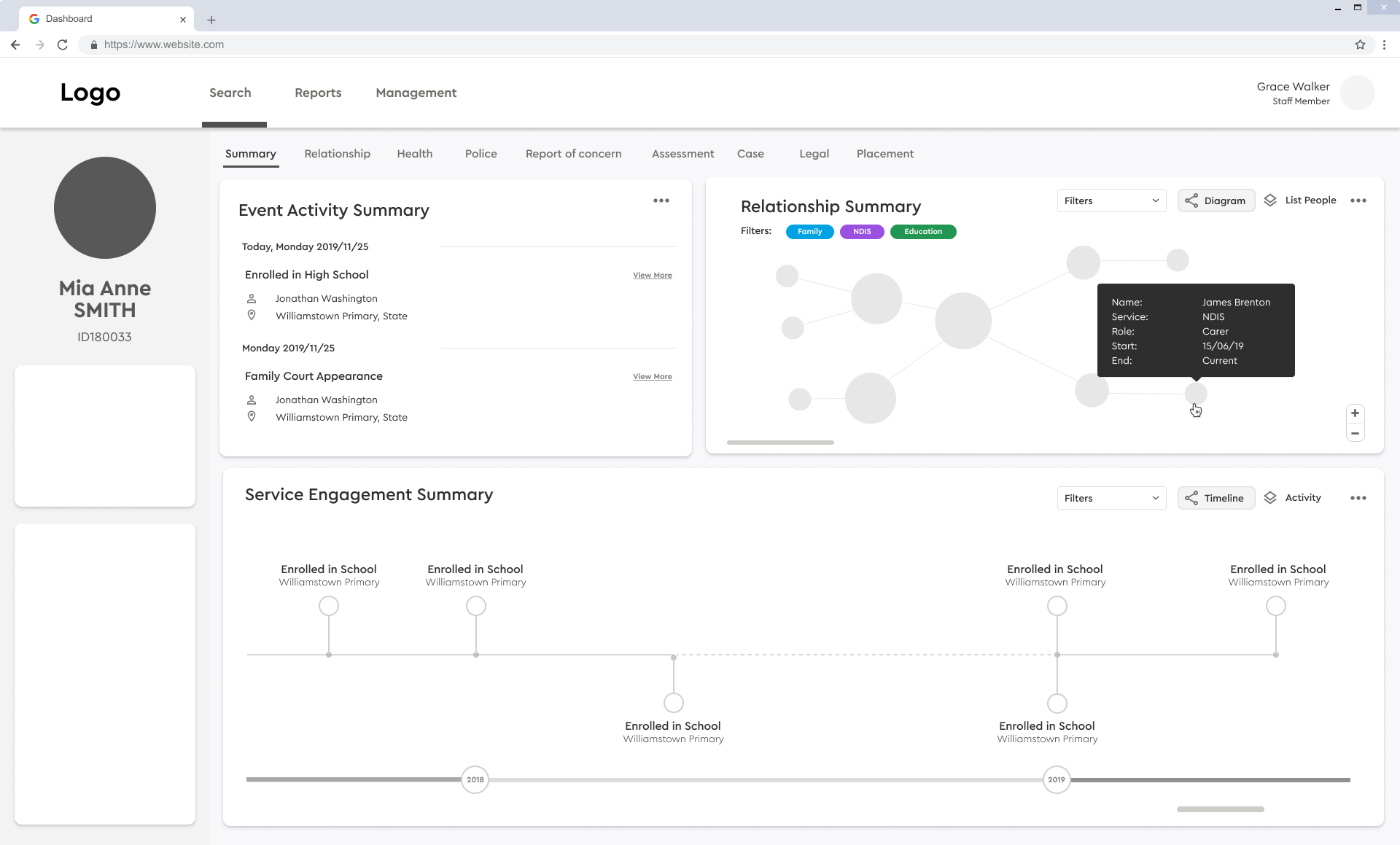
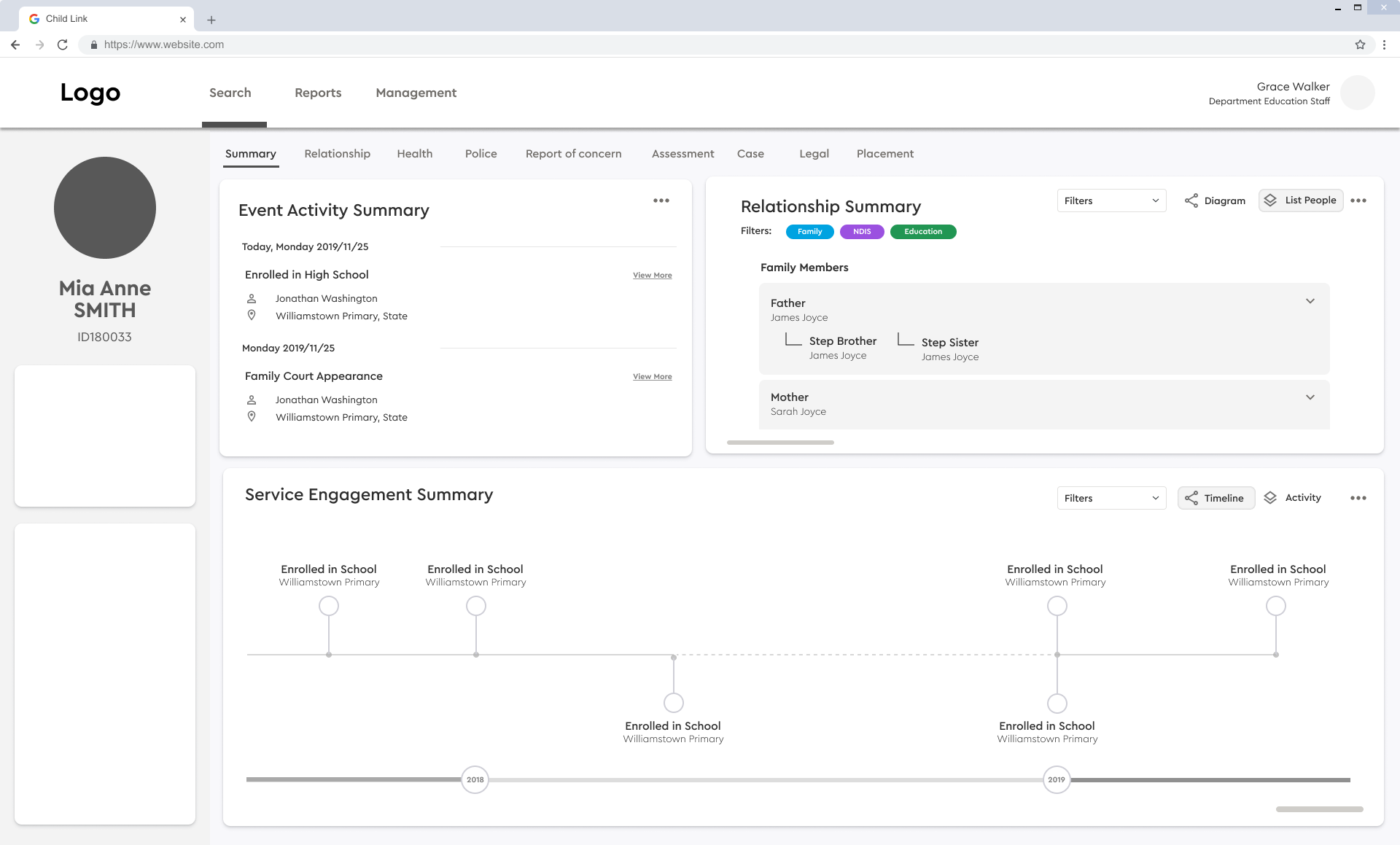
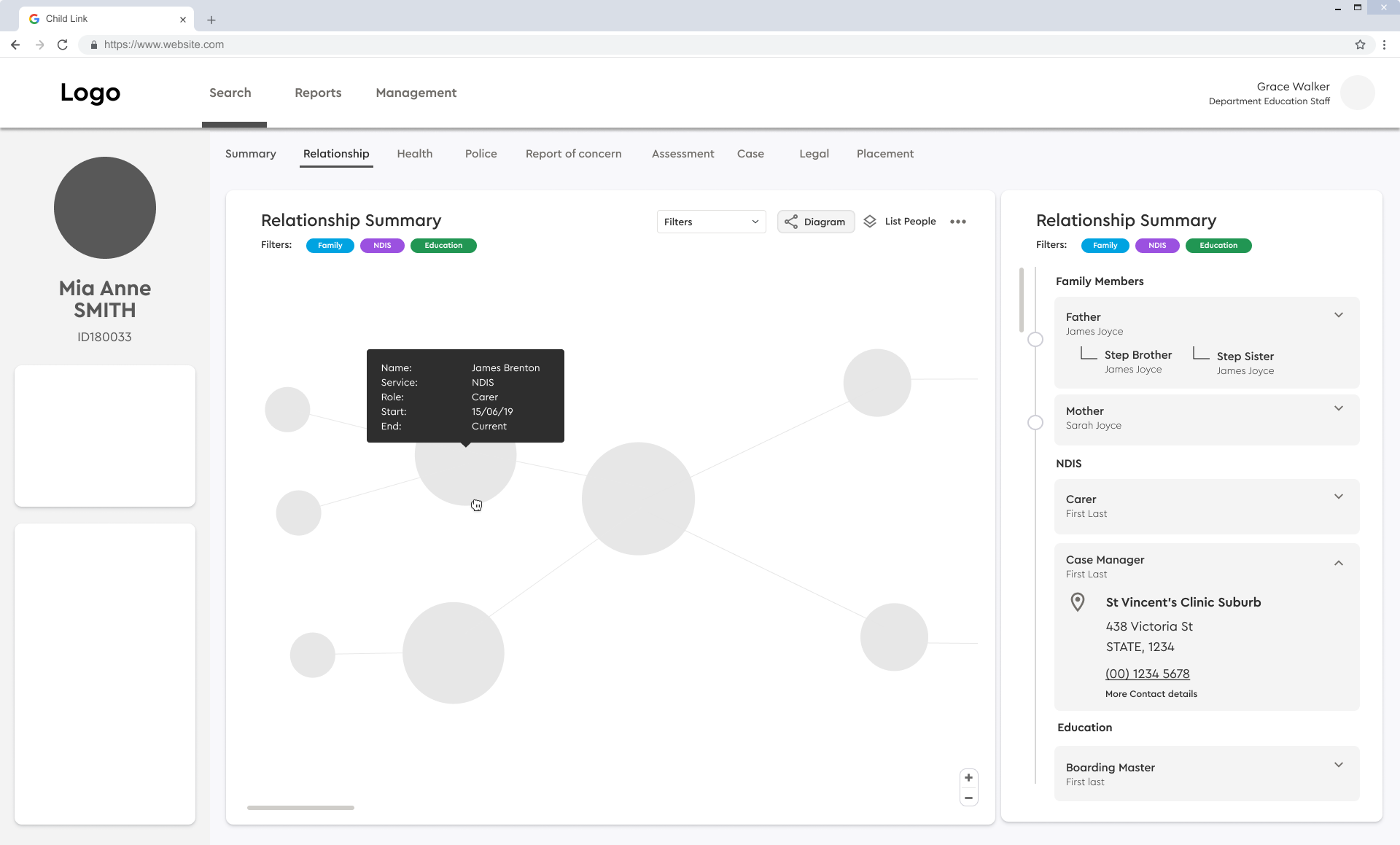
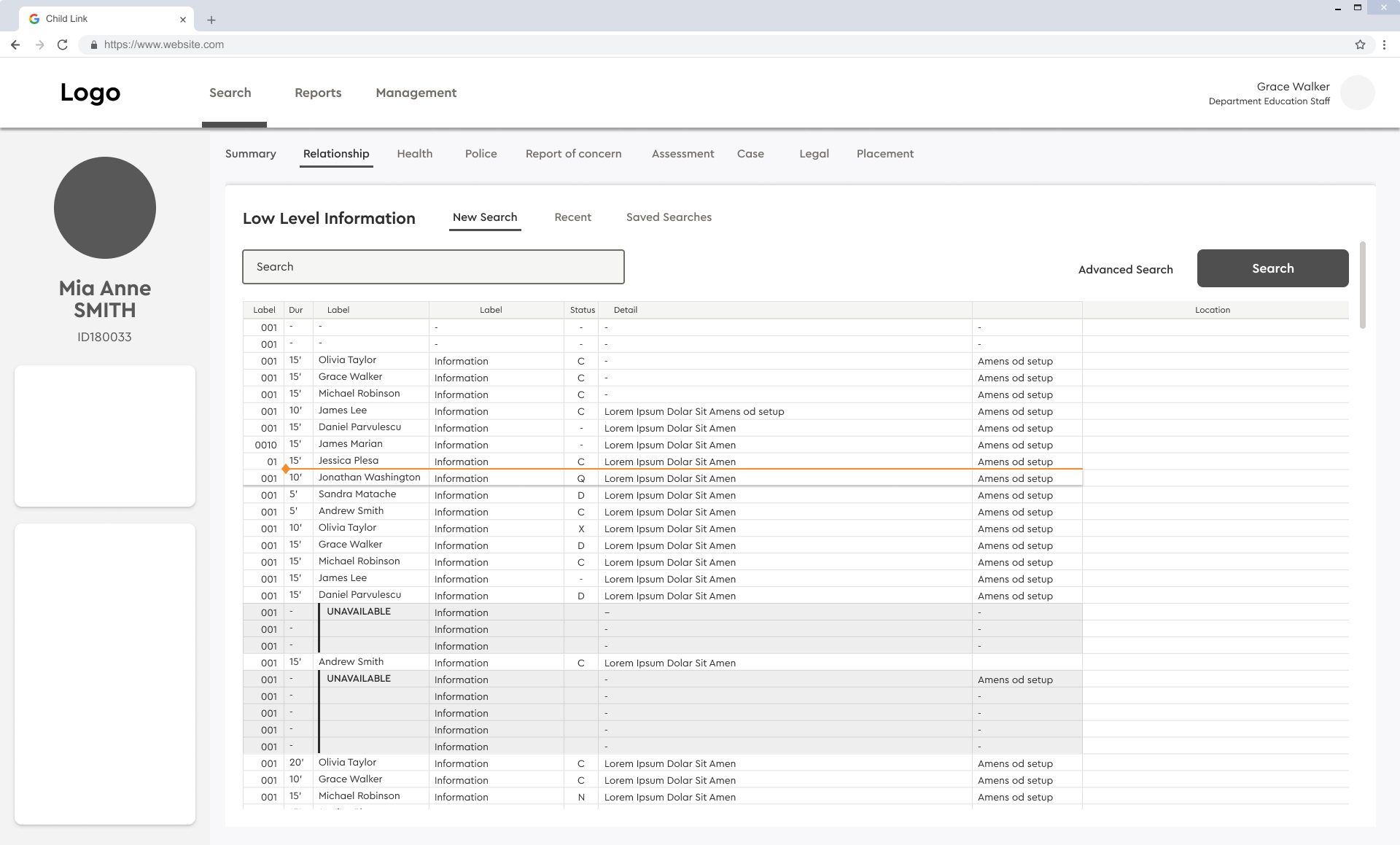
Back to Home
DFAT Partnerships for Infrastructure Website


Client: Department Foreign Affairs and Trade
Role: UX Designer (Duration: 2 weeks)
P4I Website
The Website
I was engaged on a project to provide wireframes and concept branding for a $141 million DFAT initative, Partner for Infrastructure (P4I), to partner with southeast Asian Governments and ASEAN on improving the development of quality economic Infrastructure.
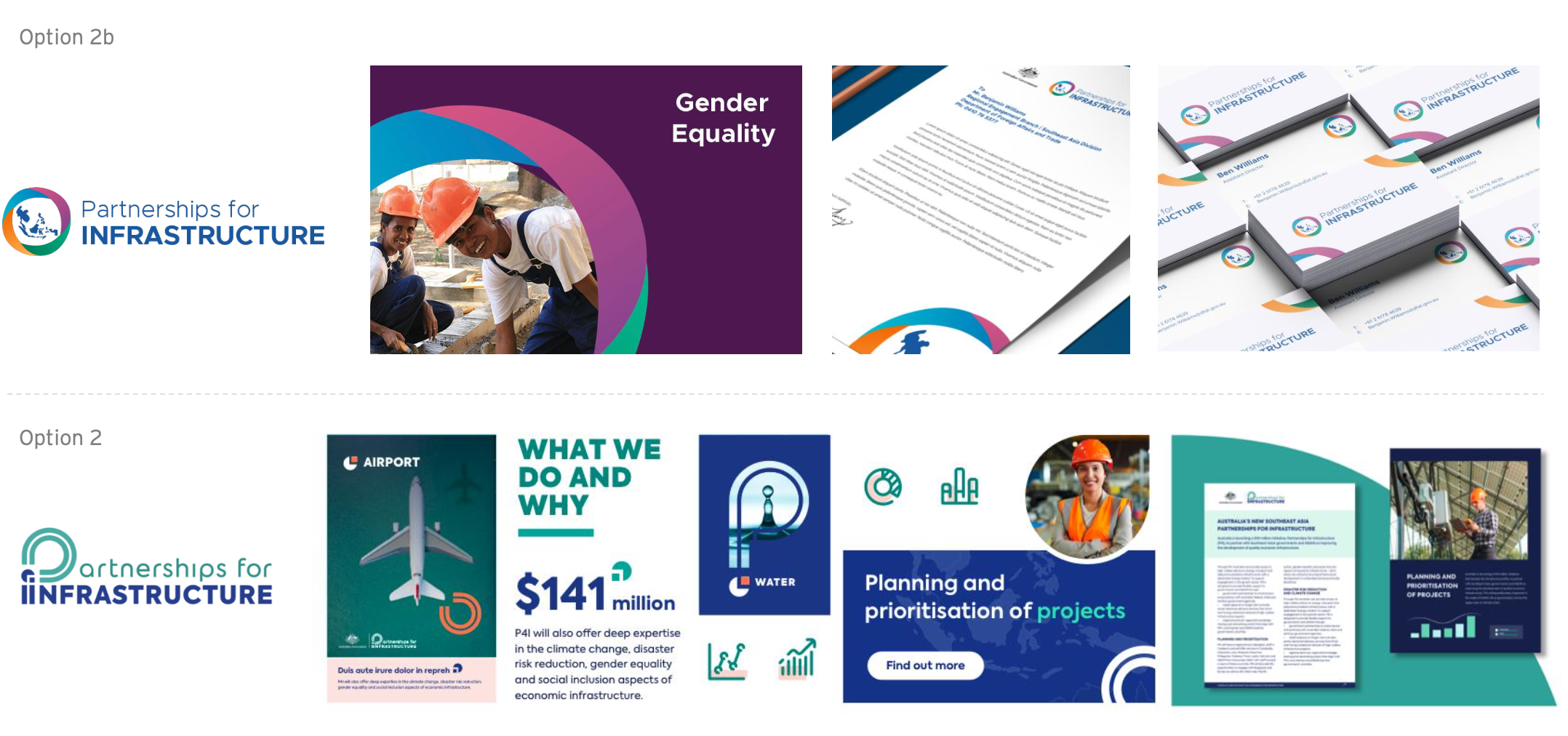
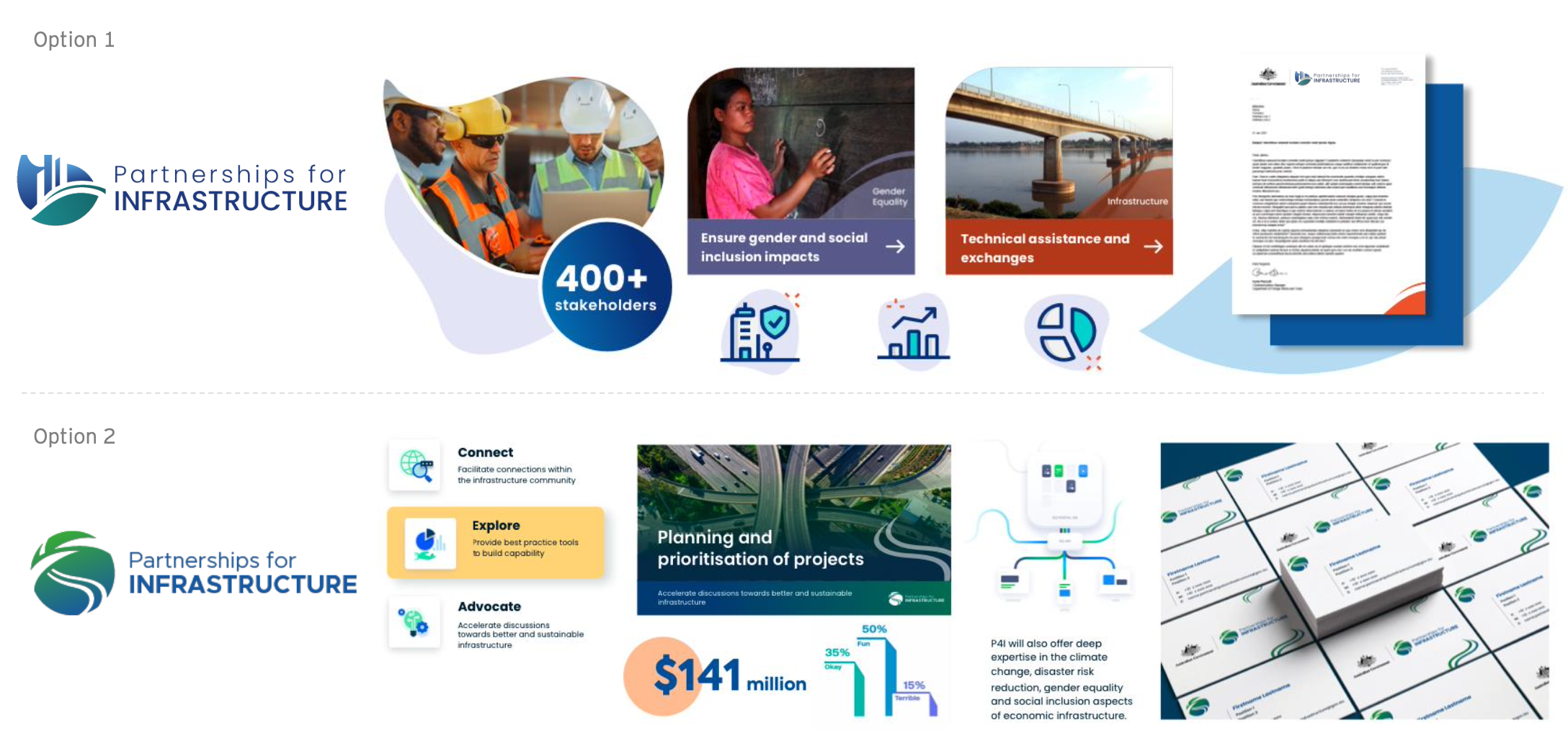
The Design Challenge
The website needed to establish a strong identity and brand as an Australian Government-led initiative.
The identity and brand needed to align with the programs’ goals and objectives and needed to be developed with particular sensitivities to international cultural perspectives on design including: colour, language, and other visual branding considerations.
Considerable consultation, feedback sessions throughout every step and documentation on all design decisions was required to be kept, and I took responsibility for all client communications throughout this process.
Being a government website, it also was required to meet all WCAG AAA Accessibility guidelines, including all considerations made for the use of e-readers and other accessibility tools.
![]()
![]()
![]()
![]()
Back to Home
The identity and brand needed to align with the programs’ goals and objectives and needed to be developed with particular sensitivities to international cultural perspectives on design including: colour, language, and other visual branding considerations.
Considerable consultation, feedback sessions throughout every step and documentation on all design decisions was required to be kept, and I took responsibility for all client communications throughout this process.
Being a government website, it also was required to meet all WCAG AAA Accessibility guidelines, including all considerations made for the use of e-readers and other accessibility tools.


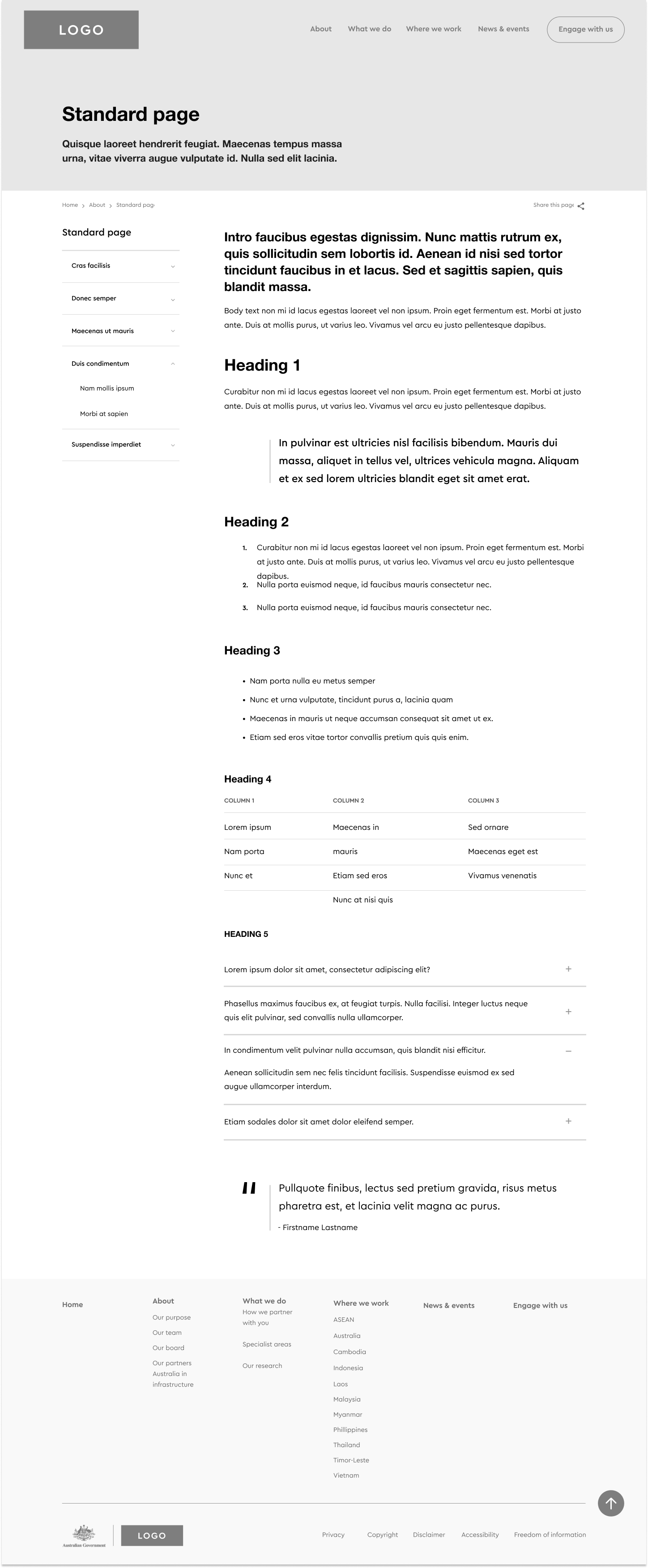

Back to Home
Jaunt Motors

Client: Jaunt Motors
Role: UX Designer (designed with Colin Gacomi)
The Jaunt Motors Experience
JAUNT Motors is a Melbourne based startup that wants to create a sustainable road trip tourism option across NSW & VIC.
By restoring abandoned Land Rovers….implanting electric motors….the vehicles (EV) will be placed in remote rural locations for city folk to rent, exploring Australia with a minimal carbon footprint

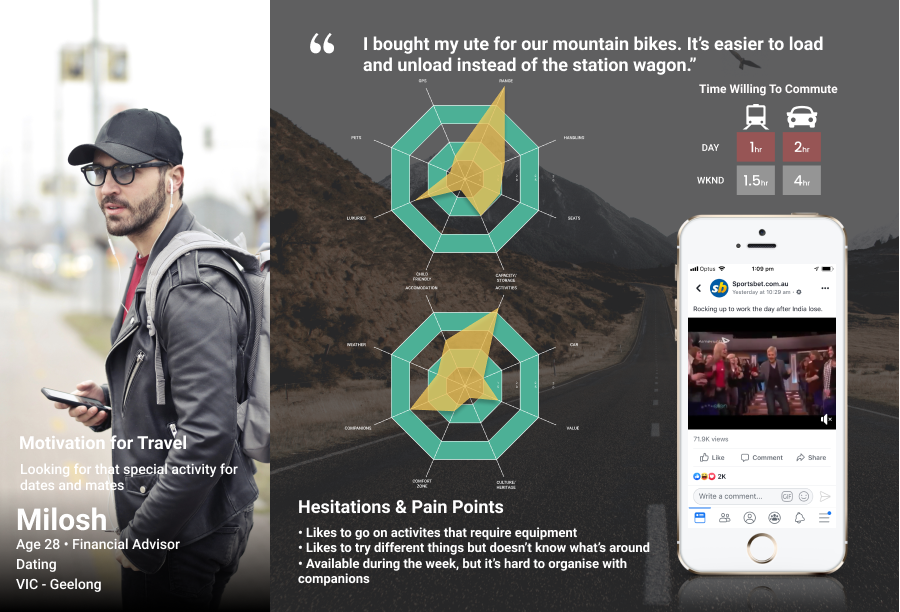
The Design Challenge
The challenge was 2 fold
1.We needed to take a service-design approach to validating the business case by exploring the E2E journey and generating user needs and wants.
2.We were also engaged to design a mobile application to assist those “taking a Jaunt”, including booking the experience and guidance/assistance throughout the journey.
The Approach: Research
Talking to the proposed market (Outdoor and 4WD enthusiasts) to establish a baseline of user needs was the first step.
Understanding that the journey needed to cater for user needs like Child Seats, GPS, Roof Racks, fridges and water were all essential parts of what users would need in order to consider a “Jaunt” a viable holiday option.

We explored also different markets who may wish to use the JAUNT service; local school groups and tour operators for one, were markets that we explored through competitor analysis and market research to understand what other opportunities were out there for Jaunt Motors.
The Approach: Design
The application provided beginning to end-of-trip services for users.
1. Information, trip planning and booking;
2. Car unlocking, charging and range map and;
3. Trip rating and feedback
We aimed to design for delight by incorporating functionality to meet our users’ wants:
1. Share trip plans with others;
2. Recommended activities throughout the journey; and
3. Booking optional extras (Bike racks, Car seats) in advance;





Back to Top